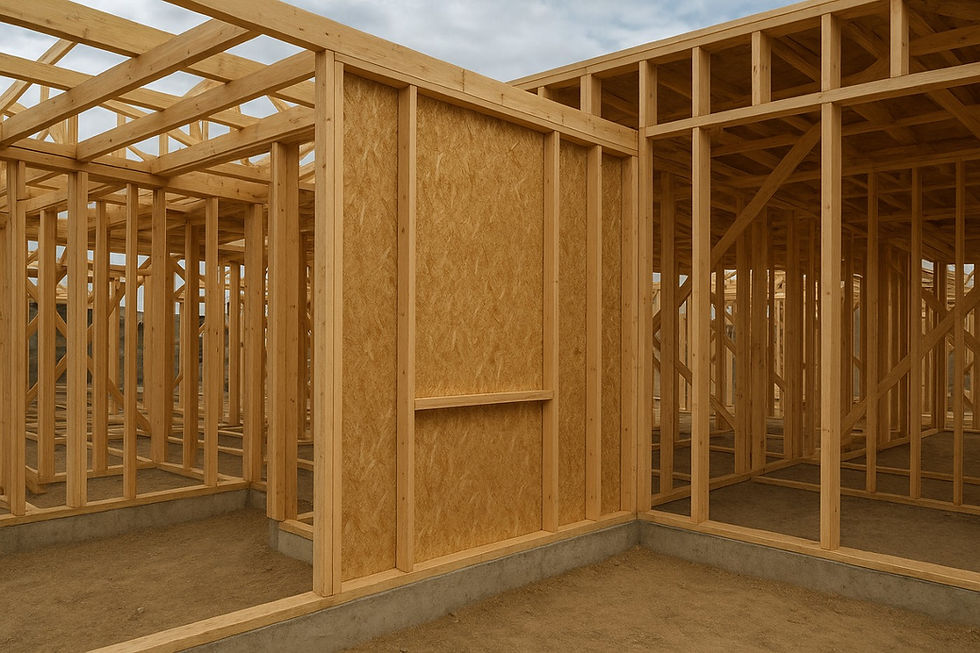Load-bearing Wall Removal: 6 Structural Considerations
- Parsways
- Mar 12, 2023
- 3 min read
Updated: 5 days ago
Creating an open-concept layout is one of the most popular renovation goals in Ontario. But when a wall carries the weight of floors, ceilings, or the roof, removing a load-bearing wall becomes a structural modification—not a simple demolition task.
If done incorrectly, it can lead to sagging floors, cracked finishes, or serious safety issues. That’s why every project involving a load-bearing wall must follow the Ontario Building Code (OBC) and proper engineering procedures.

1) Load-Bearing vs. Non-Load-Bearing Walls
Knowing whether a wall is structural is the first—and most important—step.
Feature | Load-Bearing Wall | Non-Load-Bearing Wall |
|---|---|---|
Function | Transfers vertical and lateral loads to beams, joists, and the foundation | Acts as a partition only |
Ontario Building Code Requirements | Must meet strict structural engineering standards | Minimal |
Can Be Removed Without Engineering? | No | Usually yes |
Permit Needed? | Always | Often no |
Transfer vertical and lateral loads to beams, joists, and the foundation.
Always require engineering review and a building permit.
Critical in systems such as tall walls, shear walls, and multi-storey framing.
Act only as partitions.
Often removable without engineering, depending on municipal rules.
Because load paths vary between homes, confirming wall function before demolition is essential.
2) How to Tell If a Wall Is Load-Bearing
Structural engineers use several indicators to identify a load-bearing wall:
Drawings showing structural walls or beams.
Walls located perpendicular to joists or rafters.
Walls aligned above beams or foundation walls in the basement.
Posts, columns, or point loads framed into the wall.
Roof structures where central walls support trusses.
If framing is concealed or unclear, a load-bearing wall inspection by a licensed engineer is the safest approach.
3) Structural Calculations Before Removal
Before removing a load-bearing wall, engineers must verify how the structure currently works and how loads will be carried afterward:
Calculate the weight of floors, roofing, walls, and live loads.
Trace load paths through beams, joist hangers, and posts.
Design a replacement load-bearing wall beam (LVL, PSL, glulam, or steel).
Confirm whether posts and new footings are required.
Check that redistributed loads meet OBC requirements.
These calculations ensure the new system performs as reliably as the original framing.
4) Safe Steps for Removing a Load-Bearing Wall
Removing a structural wall requires a controlled process:
Permits: Ontario municipalities always require a permit for load-bearing wall removal.
Temporary shoring: Prevents settlement or movement during demolition.
Professional demolition: Ensures adjacent framing remains intact.
Beam installation: Engineered beams replace the load-bearing function.
Posts and footings: Added where necessary to transfer loads safely.
Final inspection: Confirms compliance before finishes are installed.
These steps protect both the structure and the renovation investment.
5) Special Case: Mobile Homes
Homeowners often ask how to identify a load-bearing wall in a mobile home. Although the framing is different, the principles are similar:
Walls aligned with frame beams or roof trusses may carry load.
The steel chassis distributes loads differently from conventional homes.
Engineering review is essential before removal of a load-bearing wall.
6) Why Engineering Expertise Matters
Replacing a load-bearing wall changes how the entire structure behaves. Working with licensed structural engineers provides:
Verified calculations
Code-compliant beam design
Proper load redistribution to posts and foundations
Long-term safety and serviceability
Whether the project is in Toronto or elsewhere in Ontario, removing a load-bearing wall must follow engineered design to avoid performance issues.
Conclusion
A load-bearing wall is a core structural element, and modifying it requires more than basic demolition. From confirming whether the wall carries load to designing engineered beams and verifying proper support conditions, every step must follow Ontario Building Code requirements to ensure long-term safety and performance.
At Parsways Inc., we approach load-bearing wall removal with clear load-path analysis, practical detailing, and code-compliant beam design — ensuring renovations are safe, efficient, and structurally reliable for the life of the home.
Co-authored by Khashayar Lotfalian and Negin Amani.


